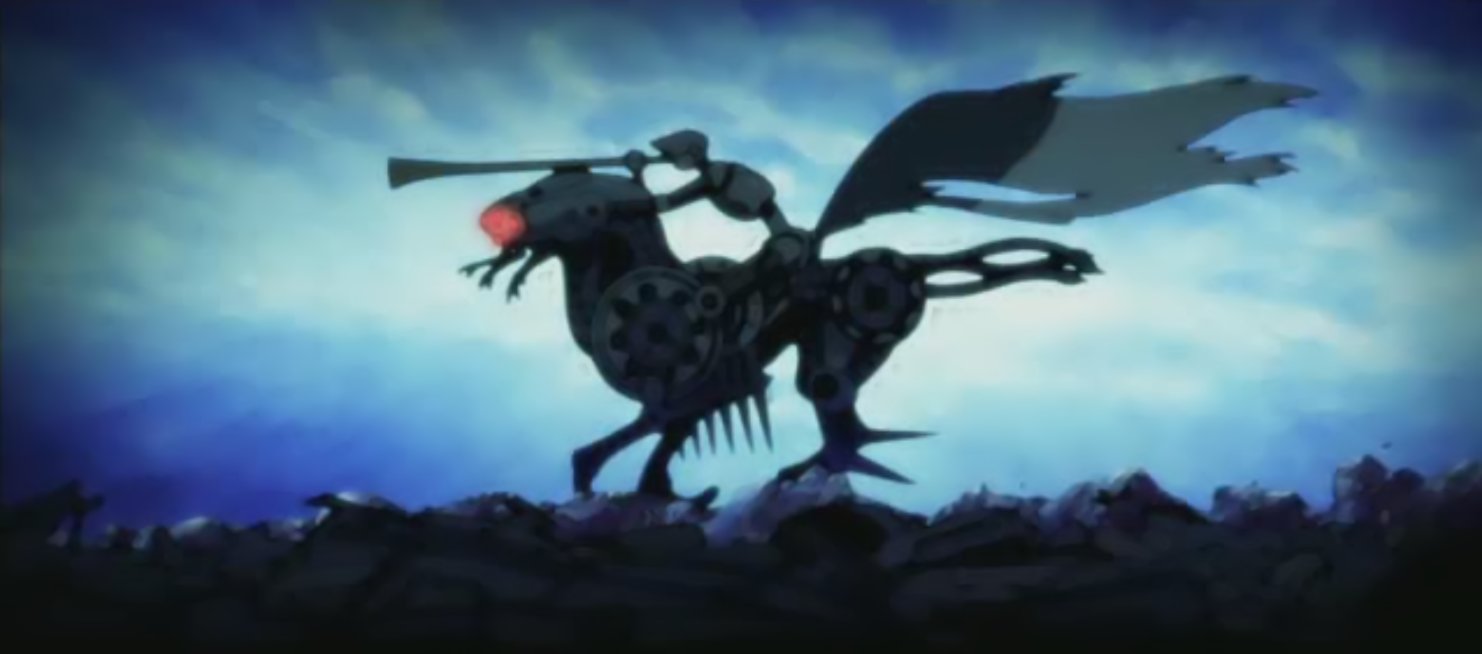The Second Renaissance
.gif)
The Second Renaissance segments of The Animatrix present a documentary-style narrated précis of the historical events preceding the creation of the Matrix. The films summarise the initial development of AI and the dissent and rioting sparked by the denial of citizenship to the machine B1-66ER; the outcasting of the machines and their development of the technologically and economically superior city 01; and finally the war between man and machine that results in man’s destruction of the sky and the machines’ destruction and subjugation of man.
Clocking in at under 15 mins combined the films are nevertheless still saturated in the political, religious and philosophical allusions that distinguish the original Matrix trilogy. These segments stuck with me on my first viewing mostly because of the uncomfortable visuals and even more disturbing implications; now, re-watching them, it is the depth and scope of these short films that impresses most. They aren’t, in the strictest sense, cyberpunk; but the dystopian and post-apocalyptic worlds they portray and the themes of civil unrest, corporate greed and technological advancement certainly qualify their inclusion in this blog for me. It’s hard to know where to begin – and where to finish – with such a richly embellished, multi-layered piece of work as The Second Renaissance.

The Wachowski’s have a knack for piling symbolism and allusion into every line of their scripts and director Mahiro Maeda takes the ball and runs with it. For me, the most interesting aspect of the films are the interrelation Maeda constructs between the world of The Second Renaissance and the world of the viewer.
much of the imagery in the films is repellant; as first the humans, then the machines, commit atrocities upon one another that escalate from violent assaults to biological warfare, torture and medical experimentation; all ‘inhumanities’ routinely carried out in the twentieth century.
Early visions of the machines show a life of servitude: we watch as they toil for their masters in the construction of a pyramidal building in the fashion of the notorious slave-built pyramids of Egypt. This link is emphasised again when the machines’ protest is referred to as the ‘million machine march.’
Visually, the machines’ aesthetic transformation reflects their experience: in the beginning the machines are humanoid, modelled in the image of man, but after their rejection from the UN summit and what might be considered their final attempt to coexist, the machines begin to take on a much darker, animalistic aesthetic.This symbolic reversal is a powerful signifier. It marks man’s demise but also the devolution of the machines from civilised to savage; a regression brought about by their initial persecution in man’s hands.
With The Second Renaissance, Maeda and the Wachowski’s create much more than a simple faux-historical document to set the scene for The Matrix and its sequels. Rather, the intricate layers of imagery and symbolism, used to evoke real historical issues and complex philosophical theory do much more, providing a foundation for much of the deeper theories tackled in The Matrix.
